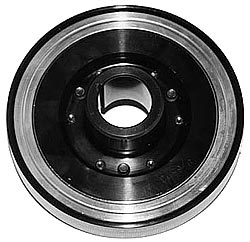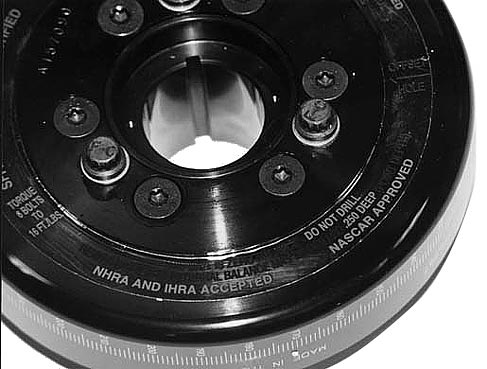
 |
This particular damper
is designed for an internally balanced big
block Chevy application. Internal balance
units have each part of the damper balanced
to 1/10 ounce-inch before assembly. Dampers
such as this should not be included on the
crank for balancing. In contrast, external
balance models (GM 400 and 454 engines)
are balanced to GM service balance specifications. |
Typically, elastomer dampers such as the ATI
models have been given a hard rap since the
elastomer material can eventually deteriorate.
When that happens, then the inertia ring can
slide or rotate. Yes, this is a truth, but you
also have to remember that the basic
ADVERTISEMENT
 |
elastomer
configuration has been used for decades on production
engines with few problems. ATI solved the deterioration
dilemma by creating a damper than can be rebuilt
at home or returned to ATI for quick rebuilding
(ATI sells a replacement elastomer kit).
Several different sizes and configurations
of dampers are available from ATI (including
applications for small and big blocks Chevy,
Ford, Mopar, Oldsmobile, and Pontiac engines
as well as specialized applications for engines
such as the Chevy LT1 and LS1 where serpentine
belt drives are integral with the damper). In
addition, lightweight aluminum models are also
available in two different diameters. Further
to this, special lightweight models are also
available for high RPM applications such as
Pro Stock and Competition Eliminator.

The nose of the ATI damper
is designed to accept a conventional three-bolt
GM style pulley. According to ATI, most crank
hubs have a protruding diameter to locate the
OEM pulley. In addition, the nose of the damper
is configured so that it accepts a 4.75-inch
register diameter for locating the Moroso/Truppi
style big block crank trigger wheel.

|